The Visual Factory
Incorporating visuals in the workplace can make things easier for everyone.
Share





People react to visual stimuli because they convey a message almost instantly. Drivers and pedestrians have street signs, traffic signals, flashing lights and road markers. When shopping in certain stores, we can tell from some type of visual signal which checkout lanes are open. When boarding trains or buses, we look for signs to assure we are headed in the right direction.
Over the past few years, most factories have incorporated visuals in their processes as part of getting lean and with the objective of making things easier for everyone. Some of these “visual factories” have done this quite effectively, using creative techniques to show where things belong (or do not belong), how to set up and operate key equipment, how to assemble or test parts, and even when to replenish frequently used items.
Here are just a few visuals that I have seen recently. Each one addressed a problem in that particular environment and made things just a little easier for those working there.
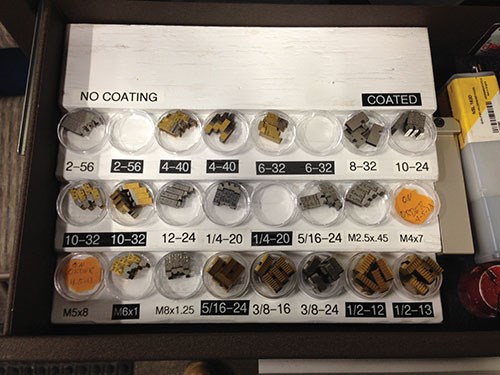
1. Inexpensive storage system. This technique for storing chasers offers a number of visual cues. First, color-coded labels indicate whether the chaser is coated or not. Second, the size of the plastic storage container regulates the number of chasers to be stocked at any time. Third, yellow notes identify which chasers are on order. According to the shop, this low-cost solution to the storage and management of chasers has yielded good results since it was introduced. (Image courtesy of Accurate Screw Machine.)
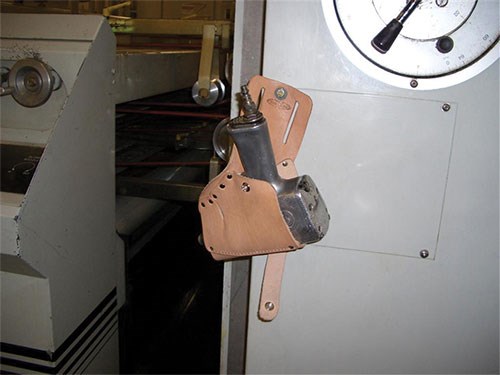
2. Specified tool home. A pneumatic drill is an essential tool in the effective setup of certain machines. After use, setup personnel at this company would leave the drill in a variety of different locations that each user felt was convenient. Unfortunately, what was convenient for one was not necessarily convenient for others, and much time was spent searching for this tool. Since the company installed a holster on the machine, the drill has had a home that seems to be a most convenient location for everyone.
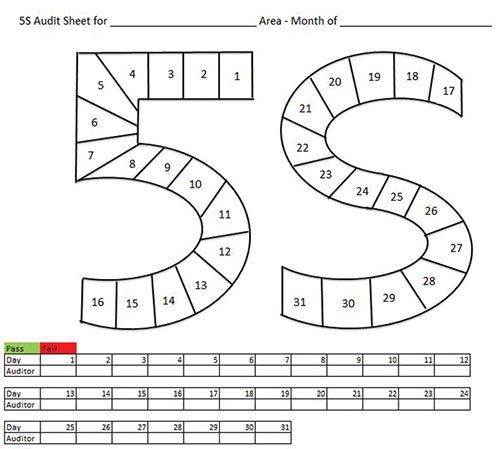
3. Simple evaluation chart. Everyone recognizes the importance of maintaining a safe, clean, organized workplace, and many employ the 5S technique (sort, set in order, shine, standardize and sustain) to accomplish this. Some find the final S to be the most difficult, as it requires a commitment to auditing work areas to assure they are conforming. A rather simple auditing tool is a 5S-shaped chart like the one shown below. At the end of each shift, the work area is checked and rated on its organization and cleanliness. The box for that day of the month then is shaded green for passing or red for failing.
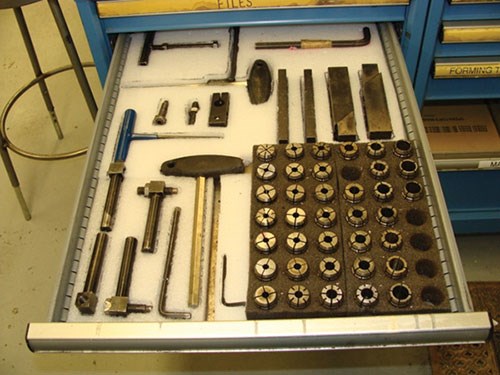
4. Tool drawer. Tools stored on shadow boards (pegboards with outlines of all tools to be contained) provide a great visual of where tools belong and when they are missing, and a well-organized drawer can do the same. Foam inserts with tool-shaped cutouts can designate a location within the drawer for each tool and show if a tool is missing. The cutouts also keep the tools in place when the drawer is opened and closed.
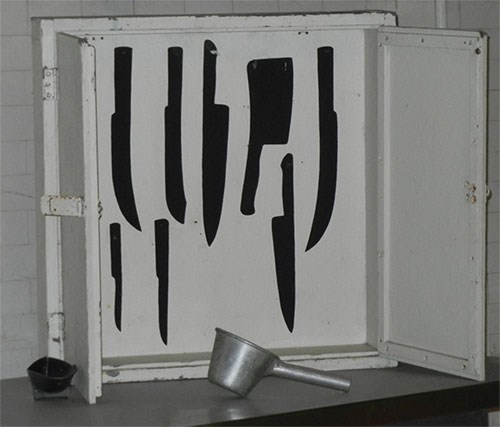
5. Shadow board. I took this photo during a tour of Alcatraz. This type of shadow board was kept in the facility’s kitchen to keep track of sharp objects when it was a functioning prison.
Read Next
Building Out a Foundation for Student Machinists
Autodesk and Haas have teamed up to produce an introductory course for students that covers the basics of CAD, CAM and CNC while providing them with a portfolio part.
Read MoreSetting Up the Building Blocks for a Digital Factory
Woodward Inc. spent over a year developing an API to connect machines to its digital factory. Caron Engineering’s MiConnect has cut most of this process while also granting the shop greater access to machine information.
Read MoreRegistration Now Open for the Precision Machining Technology Show (PMTS) 2025
The precision machining industry’s premier event returns to Cleveland, OH, April 1-3.
Read More



























